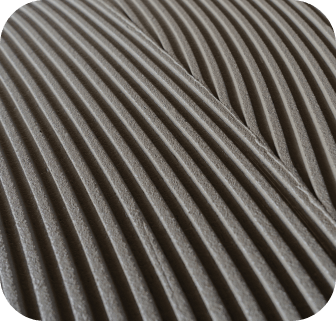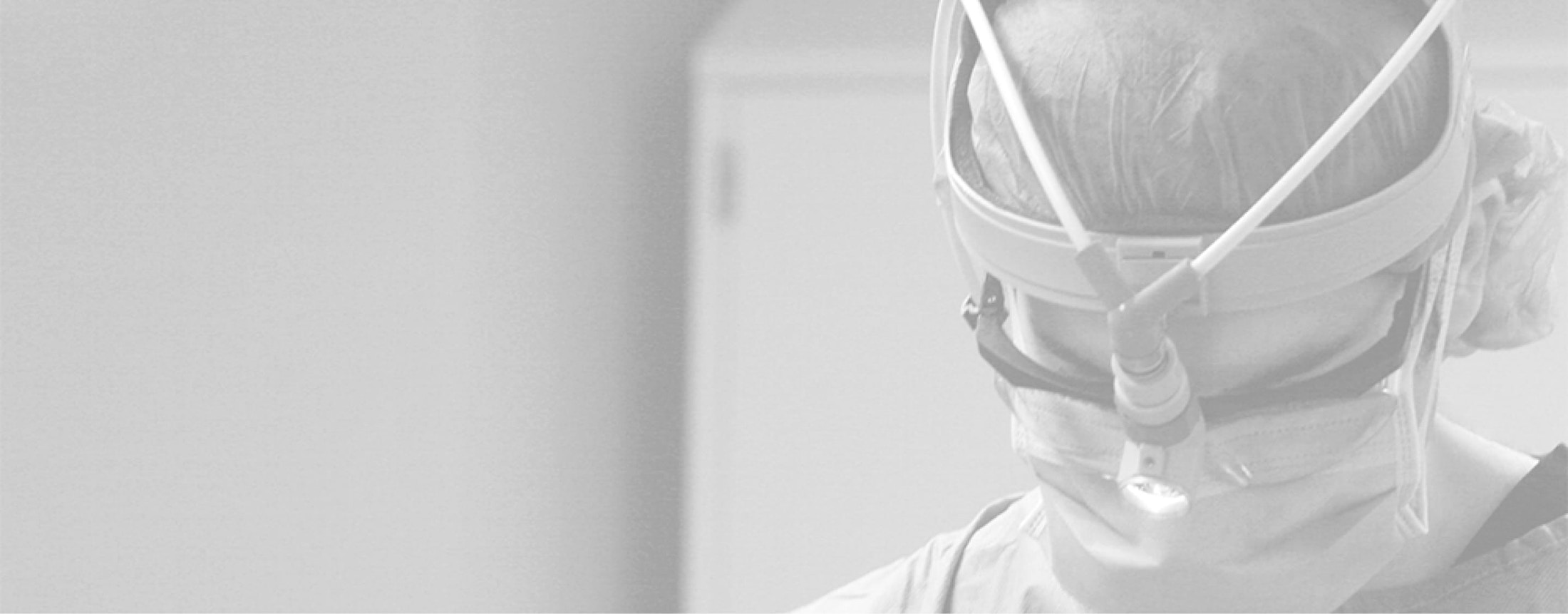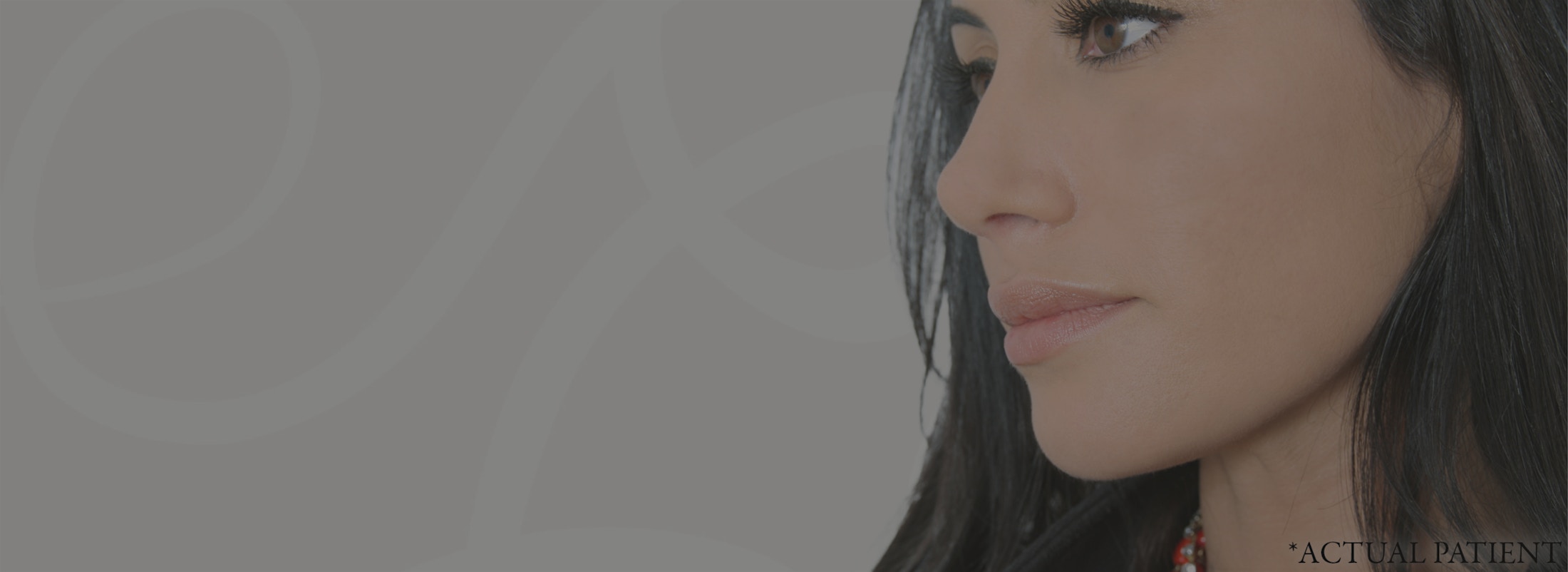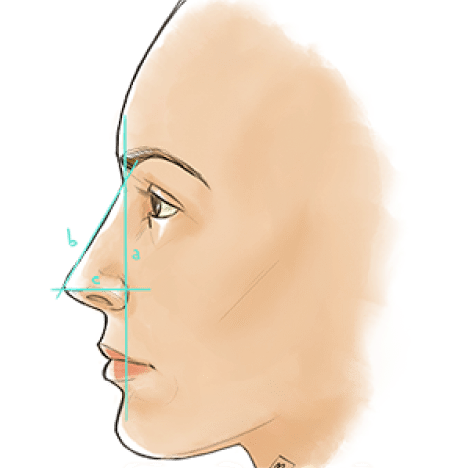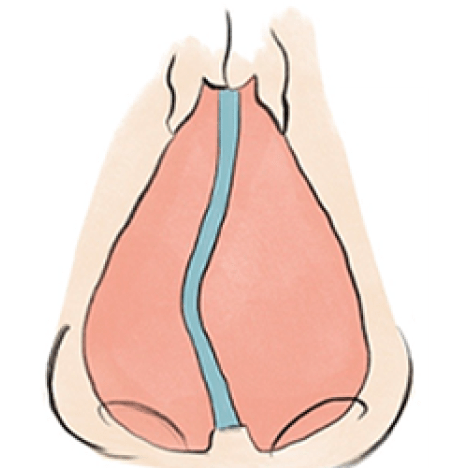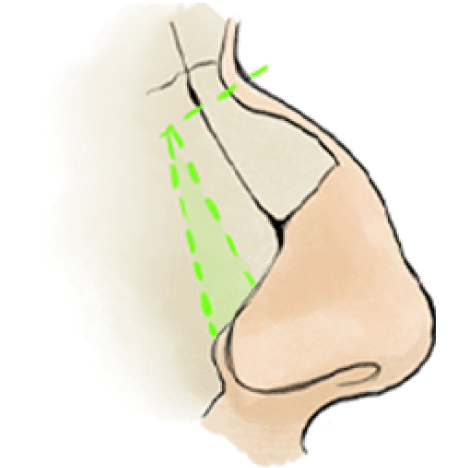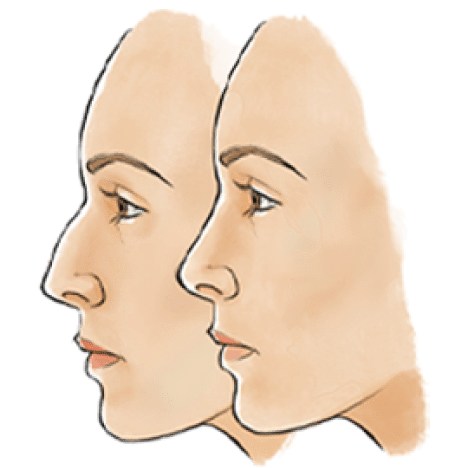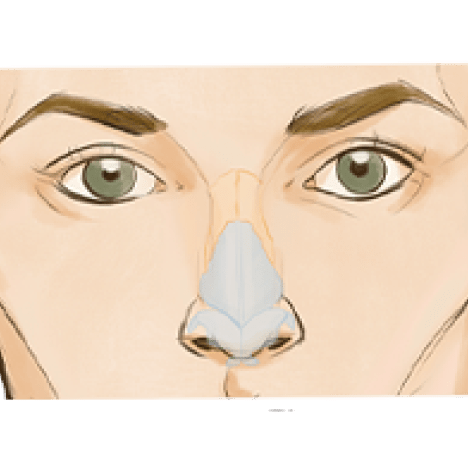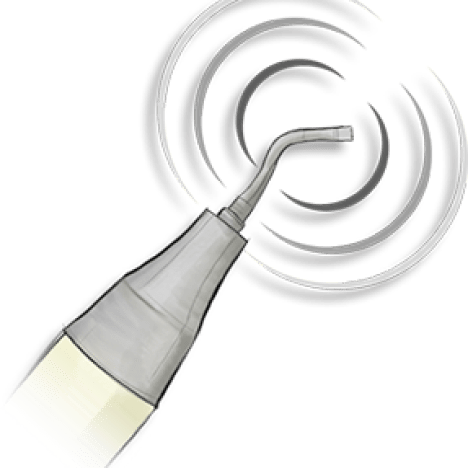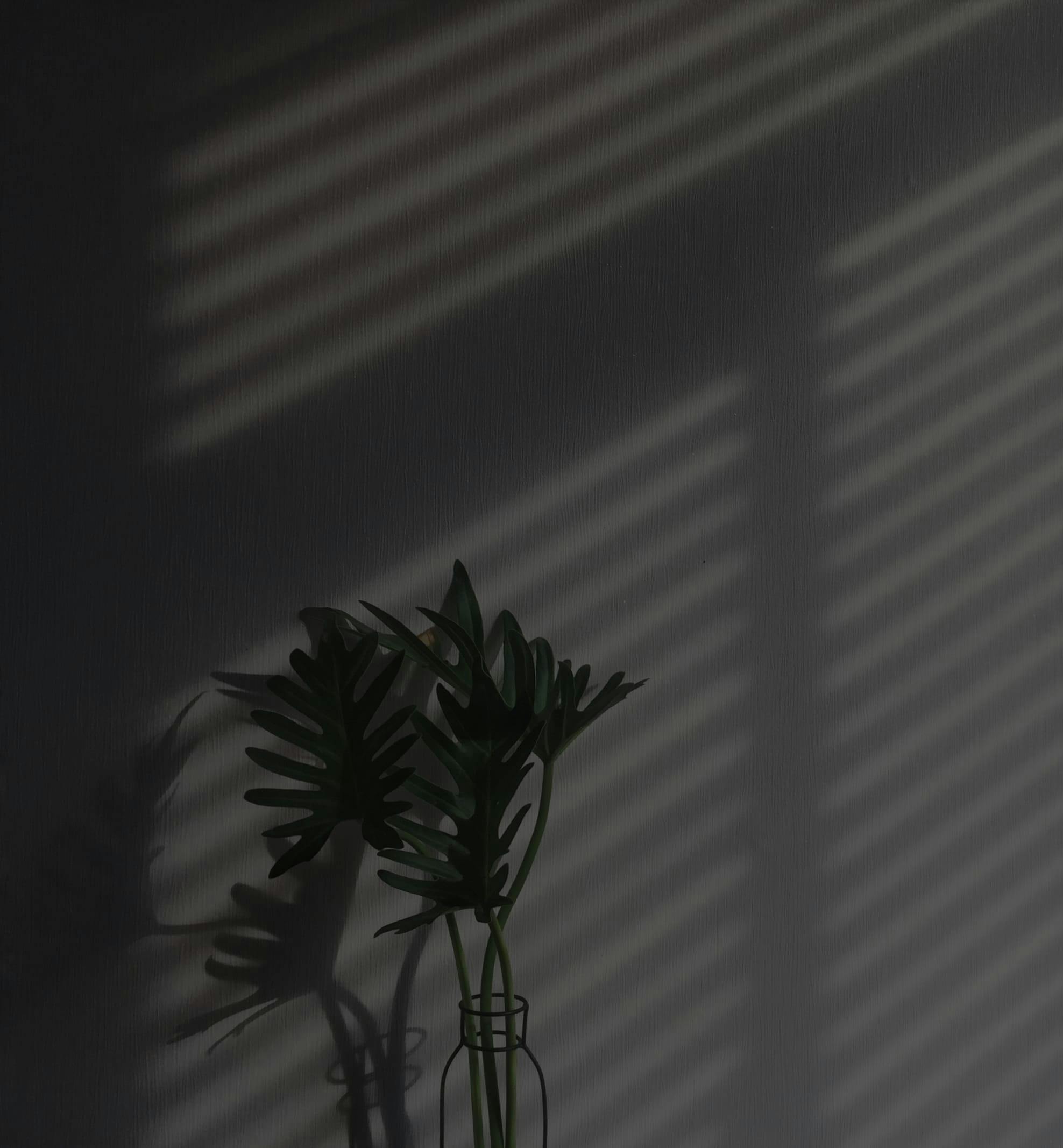Is rhinoplasty a painful operation?
Typically rhinoplasty is not considered to be painful. Most patients describe nasal congestion to be the main complaint postoperatively.
Who do you emulate in your practice?
I have a variety of people who have influenced me through their approach to their work. I find that athletes like Michael Jordan are not only talented individuals but extremely hard working, dedicated people with a passion for what they do. Even when they are the best in the world, they are willing to learn and improve. The goal is simply to be the best and always reach for loftier goals and expectations. My singular goal is to provide the best possible results and techniques in every procedure that I do. Being content with a procedure would mean to do every procedure the same, do it how the “book” says. I have dedicated myself to perform procedures on a high level and constantly improve upon results with followups and close examination of my results. I perform numerous research papers on facial plastic surgery so that not only my results improve, but that of the community of surgeons improves as well. Anyone who thinks they are doing the perfect procedure is in my opinion not being critical enough of their results. Results and techniques, even when performed at the highest level, can always be improved.
Which is better closed rhinoplasty or external rhinoplasty for my nose?
It depends on what your specific characteristics of your nose and your goals. Although the term rhinoplasty is a singular term, it is broad in its description and actually describes techniques and operations which are quite different. Some patients seeking nose job will clearly benefit from a closed approach rather than an open. Some patients will clearly benefit from an open rather than a closed approach. A third category of patients may benefit from either technique depending on their specific goals. See section on open versus closed rhinoplasty.
Does Dr. Shah have to break my nose during a rhinoplasty?
It depends on what is being done and the aesthetic goals. There are instances when nasal reshaping is preferred to formal osteotomies.
How much does a rhinoplasty cost?
Since no two noses are alike, Dr. Shah has a price which is reflective of the difficulty of the case. If there is a functional component to the procedure such as nasal obstruction, that portion may be covered by insurance. The cost of rhinoplasty in Chicago and nationwide varies tremendously.
Is Dr. Shah a rhinoplasty expert?
Dr. Shah has been trained by several of the most prominent figures in the rhinoplasty world including arguably the top two endonasal rhinoplasty surgeons in the world and one of the world’s revision experts. From this background in rhinoplasty, Dr. Shah has developed a reputation as having a keen aesthetic and the ability to perform the full breadth of rhinoplasty procedures. He has written many seminal articles and continues to perform research on nasal airway, nasal aesthetics in order to further the entire field of rhinoplasty.
Does Dr. Shah have a preference for technique regarding open versus closed?
Dr. Shah performs both techniques and does so without bias.
Is insurance accepted for rhinoplasty procedures?
Many patients seeking cosmetic correction of their noses have underlying functional issues. Dr. Shah will perform a thorough clinical exam to determine if there is a functional issue. Insurance can cover functional changes to the nose, but not aesthetic (cosmetic) changes to the nose.
What is the youngest age rhinoplasty can be performed?
Fifteen is generally considered to be the youngest age. However, every patient matures at a different time and pace. Generally speaking, once the patient has not changed shoe sizes for two years, it is safe to perform a rhinoplasty from a physical standpoint. The patient must be mature enough to understand the implications of rhinoplasty and the decision must come from the patient not pressure from the parent.
What does Dr. Shah go over in the consultation?
Dr. Shah has one of the most thorough and thought out consultations available. During the consultation the following take place:
- pertinent history and physical
- high quality photographic stills
- examine inside and outside of nose
- determine best individualized approach to your nose (open vs closed, technique)
- “blueprint” of technique I would recommend
- explain rationale behind technique chosen
- computer imaging and simulation (important to determine what is best approach)
- review pre and post instructions
- answer questions
The most valuable piece of information as the patient, is to receive the technique and rationale behind it. Dr. Shah uses a wide variety of techniques including open and closed, costal cartilage, auricular cartilage, etc. Dr. Shah does not recommend surgery unless he believes it is warranted and can improve the function or appearance of the nose.
Is there another non-surgical option rather than rhinoplasty?
The short answer on this is no. Most fillers in the nose can cause a lot of problems. If they are to be used in the nose, they must be done under extreme care and with the expectation that the patient will not need a future rhinoplasty. Click here to learn about facial fillers in the nose. I think of using someone advertising a non-surgical rhinoplasty as a screening tool to eliminate them from my search as a rhinoplasty surgeon. It is in my opinion not a procedure I would recommend to a prospective patient seeking rhinoplasty and does not make sense from a variety of reasons. The exception to this rule is some post rhinoplasty patients who may need a smalll amount of Restylane or Juvederm in a very small amount in one area or another.
I am a male patient and do not want my rhinoplasty to look unnatural?
Whether you are male or female, your nose should not look unnatural. The key to rhinoplasty is to improve the existing structures of the nose in a balanced haromonious fashion with the rest of the face.
I don’t live in Chicago, is it difficult to travel there?
Chicago is located in the central portion of the United States and is a travel hub and headquarters for many airlines and businesses. The airports are conveniently located near the downtown which is accessible by either a cab ride or public transportation. Our office can help arrange for every travel detail from Hotels and Extended Hotel Suites, Nursing or Medical Assistants if necessary, to having food and supplies stocked.
Is it okay to pull my nasal hairs after rhinoplasty?
The best solution is to use an electric nose trimmer. Tweezing nasal hair can lead to traumatic insult and infection and/or boils to the inside of the nose. The inside of the nose is where “bad” bacteria can live such as MRSA and others. The incidence of MRSA is on the rise in the general public with the overuse of antibitoics. I would wait 2 months before using an electric trimmer and 6 months before tweezing if tht is a procedure you feel necessary.
Who is better at rhinoplasty, a facial plastic surgeon or a general plastic surgeon?
It depends on the individual and training. Only a surgeon whose practice devotes signficant attention to rhinoplasty should be considered. It is by far the most challenging operation.
Is rhinoplasty safe?
The procedure as a whole is safe from an a medical standpoint where such complications are rare. However, the most significant issue with rhinoplasty patients is poor aesthetic result. Even surgeons who place results which they would consider some of their better work may qualify as a complication for other surgeons. Although the revision rate quoted for nose surgery is about 10-20% nationally, I think that this number may be signficantly higher for some surgeons who don’t offer long term followup.
If I have a loss of smell, will I get it back after a functional rhinoplasty?
Most likely not. Anosmia or loss of smell is frequently caused by a virus. Once there is loss to the delicate smell nerve, called the olfactory nerve, the loss is typically permanent. Some cases, improving a septal deviation will lead to improved smell but I would not count on it.
Where does rhinoplasty take place?
Rhinoplasty takes place in a formal operating room setting. An anesthesiologist is present throughout the case.
Am I good candidate?
No one can tell you whether or not you should or should not have a procedure done. Many patients may have breathing issues and seek to correct the appearance of the nose at the same time. Dr. Shah will advise about the procedure, potential risks, and whether or not undergoing such a change will enhance your appearance during the consultation.
How long does it take to recover from a rhinoplasty?
Most patients are able to return to work at one week. While some of the changes are evident immediately after surgery, many of the changes take time over several months to manifest.
Are all rhinoplasty(s) operations performed the same way?
Every rhinoplasty performed by Dr. Shah is tailored to the patient. There are over 1000 techniques which can be individualized to each patient. It is important that your surgeon is knowledgeable in a variety of techniques as each nose may require a a unique set of procedures for optimal outcomes.
Are their ways to reduce bruising after rhinoplasty?
Gentle technique, ice, and avoidance of blood thinners are the best ways. Some patients may take Arnica Montana, Bromelein, Pineapple extract or other homeopathic medicines which can help but are not critical in reducing bruising.
Does rhinoplasty hurt?
Most of our patients are taking Extra-Strength Tylenol on the first day after the procedure with minimal discomfort. However, each patient has a different experience.
How do you know if a doctor is board certified?
Typically, you can verify a physician’s board certification by checking the board’s website or calling the boards toll free number. For example, Dr. Anil Shah is certified by The American Board of Facial Plastic and Reconstructive Surgery, which has a certification website. And he is also certified by the American Board of Otolaryngology, which was a phone number to call to check certification (713-850-0399). Most physicians will also place board certification in their office.
When can I go swimming as a rhinoplasty?
Patients can go swimming 2 weeks after a rhinoplasty in clean, chlorinated water with Dr. Shah’s permission.
What is Dr. Shah’s approach to rhinoplasty/ revision rhinoplasty?
Dr. Shah often compares rhinoplasty to architecture. There are some parallels in building a nose and building a skyscraper (there are many in New York). It wouldn’t be prudent to just jump into construction without a well planned approach or a blueprint. There is science to ensure that the building will function is safe and not collapse. However, there is artistry in designing the building, creating the building, and interpretation of glass and light and space. There have been significant advances in buildings over the time, with builders now able to buildings taller and with shapes and materials not possible in years past. Just as an architect for your house or company’s skyskraper would welcome your input, so should your surgeon.
He is one of the few surgeons who uses complex computational measures prior to every nose surgery to assess symmetry, projection, angles. Of course, these complex measures work in conjunction with Dr. Shah’s artistic eye. The idea is for Dr. Shah to guide you through this process and let you know what is and is not possible and what would look appropriate and function in balance and harmony with the rest of the face and body. He is using the most advanced rhinoplasty techniques available with state of the art planning and technical precision to help in creating your new nose.
How will I know if Dr. Shah knows what I want?
One of the key steps of performing revision rhinoplasty is a clear idea of what the patient wants and communication. Dr. Shah uses computer imaging to facilitate a clearer understanding between himself and the patient.
The computer imaging serves as a guide to create various noses and determine an aesthetic level of acceptance. For example, a patient may want her nose deprojected, and Dr. Shah will present multiple options to determine what the patient finds satisfactory or not. If the patient and Dr. Shah do not come to an understanding during his consultation, he will meet with them as many times as necessary to better understand and clarify each others aesthetic goals. If Dr. Shah does not feel like he “understands” the patient’s aesthetic he will not operate on the patient.
Will Dr. Shah give me the most fashionable nose available?
Dr. Shah does not believe in trends for the nose. His desire is to create a natural nose in appearance and shape specifically created for that patient. He does not have a preference to his nose (strong, projected, etc), but just creates nose which match a person’s face in a natural appearance. “Fashion passes, style remains.” Coco Chanel
How soon can you spray tan after a rhinoplasty?
It is typically okay to have a spray tan one week after all of the sutures have been removed from the exterior portion of the nose. However, each case is different and speak to Dr. Shah for your specific case.
How soon can I go swimming after rhinoplasty?
Patients can typically go swimming two weeks after the procedure in both chlorinated, salt water and fresh water. Patients who engage in potential traumatic activities such as surfing, tubing, body boarding should restrain until further notified by Dr. Shah.
Can I put any scar products on my rhinoplasty incisions after the procedure?
Dr. Shah does not advocate any scar products at this time. Several products such as Vitamin E or Mederma have not been shown to improve scars. There are patients who have used such products in the past on other scars and have noticed improvement. For these patients use of these products may be okay. Scarguad MD has been used with some success by some patients. The vast majority of scars will heal to a fine thin line with or without a scar product.
How soon can I have a facial after rhinoplasty?
Dr. Shah usually recommends waiting at least 3 months but in some cases longer depending on the type of rhinoplasty. The reason is that some extractions can push debris further into the nose and cause an infection. Patients who are concerned with excessive sebum and clogged pores should consider the use of skin care products such as retinols, astringents, and other products.
that some extractions can push debris further into the nose and cause an infection. Patients who are concerned with excessive sebum and clogged pores should consider the use of skin care products such as retinols, astringents, and other products.
How soon after a rhinoplasty can a patient have LASER procedure?
The question here is on the type of rhinoplasty and the type of LASER. Soon after a rhinoplasty, LASER resurfacing procedures (i.e. C02 laser, Erbium laser, Fractionated C02 laser) must be performed with caution as the skin takes some time to revascularize. In some cases, patients must wait 6 months or longer to receive some type of LASER procedures. Lasers used to target blood vessels can be utilized earlier with conservative settings. It is best to speak to your surgeon to help determine a timetable that maximizes the risk to benefit ratio.

